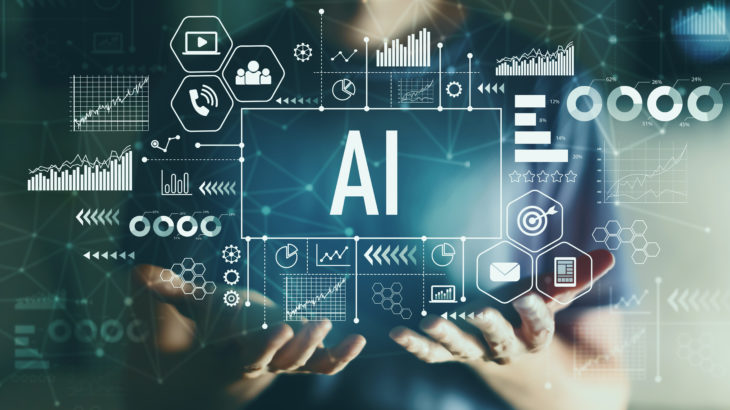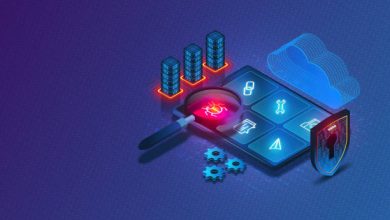AI Appreciation Day: Tech Experts, Executives Weigh in on the Double-Edged Sword That Is Artificial Intelligence
Taking a Step Back and Reflecting on the AI Journey and Where It Will Go From Here

Today is a special day. It’s AI Appreciation Day!
Artificial Intelligence (AI) has emerged as one of the most transformative forces of our time, revolutionising the way we work, live, and protect our digital world. In business, AI is powering smarter decision-making, streamlining operations, and unlocking entirely new models of growth and innovation. In our everyday lives, it’s enhancing personal convenience, shaping how we interact with technology, and increasingly, securing the data and systems we rely on. AI’s impact is even being felt in the realm of cybersecurity—where it is being deployed to detect threats faster, respond more intelligently, and stay ahead of ever-evolving cyber risks.
In short, Artificial Intelligence is here, and it is changing life as we know it
As we mark AI Appreciation Day, it is only fitting to take a step back and reflect on the journey so far—its achievements, its challenges, and its immense potential. In this special compilation, we bring together commentaries and insights from some of the leading voices in technology. These experts offer valuable perspectives on how AI is being adopted across industries, the ethical considerations that come with its rise, and the exciting possibilities that lie ahead.
Indeed, read through for these expert insights to get an idea on where Artificial Intelligence might be headed in the future. While you’re at it, happy AI Appreciation Day!
Rob Newell, Group Vice President Solutions Consulting, Asia Pacific & Japan, at New Relic
On AI Appreciation Day, it is important to celebrate the significant progress made in recent years but also recognise that the AI race is far from over. APAC’s emerging leadership in AI adoption and investment means that AI is weaving its way into our everyday lives and systems. Organisations are using large language models (LLMs) and generative AI (genAI) to optimise operations, and AI agents promise to reshape our most common digital experiences. The value that organisations receive by augmenting human capabilities with AI is clear: there are significant cost and productivity efficiencies that help businesses unlock new frontiers of innovation.

For organisations to integrate these AI tools and realise their potential, they will have to fundamentally rethink their technology architectures. Regardless of the size, all companies are facing the same harsh reality: AI tools are expensive to use, and the costs of building new AI-backed technologies are unpredictable. Organisations that win in our inevitable AI-enabled future will not necessarily be the ones with the best ideas; instead, the winners will be those that have figured out how to effectively balance cost, value, and performance.
Despite the rapid evolution of generative AI technology, the fundamental questions underpinning the cost of AI are simple: how often do companies query an LLM and how much do those queries cost? By controlling these queries effectively and getting the most out of every call by adopting AI-supportive techniques such as retrieval augmented generation (RAG) and agent frameworks, companies can more reliably predict and lower their AI expenses.
Historically, observability has offered organisations the ability to detect and respond to anomalies in their systems and optimise performance. But with AI driving a revolution in processes and architectures, observability needs to evolve to keep pace and continue providing users with a window into their own systems and processes. New Relic research found that 38% of IT leaders in Southeast Asia regarded AI as a key driver for observability adoption.
Organisations need intelligent observability to rise and meet the challenge brought by AI. This next phase of observability will be preventive, self-healing, and autonomous, so that it can surface the right insights to the right person at the right time. AI monitoring tools give companies end-to-end visibility into their AI-integrated workflows, but more importantly, real-time insight to troubleshoot, compare, and optimise approaches to using LLMs to improve their features or offer brand new experiences. This allows companies to adjust when necessary to manage costs, improve performance, and reduce common issues that can cause costly hiccups.
In the long term, AI will truly become ubiquitous when we can reliably achieve the right balance between cost, performance, quality, value, and reliability. Companies developing AI features need to identify the right use cases to get the most out of those LLMs while still delivering value and innovation to their customers.
Observability helps companies maintain reliability, quality, and efficiency throughout all components of the AI technology stack, alongside services and infrastructure, so that they have the data they need to make decisions that limit expenses, maximise ROI, and accelerate business outcomes.
Frank Bignone, FPT Software Vice President and Director of Digital Transformation Division at FPT Corporation
To sustain Asia Pacific’s momentum in AI innovation and adoption, it is critical for organisations to get the next phase of scaling AI right. Scaling AI effectively involves implementing AI broadly across the organisation and requires a structured process to expand use cases. Organisations embarking on the journey to scale AI will need to establish best practices and the right tools.
Developing a single generative AI model or agentic AI system is no simple task—it requires orchestrating multiple specialised components and frameworks, often integrated by AI practitioners leveraging a broad ecosystem of open-source and proprietary technologies.

This is where MLOps has evolved into what we now recognise as AIOps: a comprehensive set of practices and platforms designed to build, maintain, monitor, and govern AI systems effectively. AIOps establishes industry best practices and robust tooling for the end-to-end lifecycle of AI models—from development and deployment to continuous adaptation—while ensuring speed, reliability, and compliance. More importantly, it enables organisations to scale AI solutions intelligently and ensures these systems remain flexible and responsive to changing market dynamics, evolving customer expectations, and shifting regulatory landscapes.
Beyond adopting AIOps, organisations should embed sound software engineering principles such as modular design and reusable code components. According to McKinsey, these reusable code packages significantly accelerate development cycles and reduce operational costs by eliminating redundancy and freeing AI teams to concentrate on higher-value, strategic innovation.
Adopting a modular approach makes generative AI and agentic AI projects leaner, more resource-efficient, and easier to update or expand. This adaptability is critical as businesses seek to repurpose AI capabilities rapidly in response to emerging opportunities or compliance requirements. The combination of advanced AI operations frameworks and disciplined engineering practices is essential for delivering scalable, agile, and sustainable generative and agentic AI solutions that drive long-term business value.
Micah Heaton, Executive Director, Microsoft Product and Innovation Strategy, at BlueVoyant

“AI Appreciation Day isn’t about machines. It’s about us. It’s about the choices we make at machine speed that still echo at human scale. AI tools and other agentic allies are not here to save us. They are here to reflect us. To amplify our courage, expose our blind spots, and force us to ask who we protect first and why. While these tools are reshaping daily life, WHAT and HOW we build them demands responsibility at the gate, not as an afterthought. Responsibility isn’t a checkbox. It’s the only thing standing between progress and catastrophe.
Today is a reminder that AI is both saviour and servant. It accelerates our decisions, but it doesn’t tell us who we want to be. That choice is still ours. And it always will be. If we want AI to work in the right direction, we have to bring every voice to the table. We have to build with intention, wield it with moral clarity, and protect people with the same ferocity we protect their data. That’s the real work. That’s the real appreciation. Resilience isn’t given, it’s built.”
Nadir Izrael, Co-Founder and CTO of Armis
The news cycle constantly highlights how AI is rapidly supercharging the capabilities of nation-state attackers, cybercriminal groups and bad actors alike. Armis research tells us that nearly three-quarters (74%) of Australian IT decision-makers now agree that AI-powered attacks pose a significant threat to their organisation’s security.
AI may be the weapon of choice for attackers, but it’s also the most powerful tool defenders have at their disposal. When harnessed effectively, AI-driven threat intelligence transforms security from a reactive scramble to a proactive strategy, offering organisations the chance to get ahead of threats rather than chase them. In this new AI-driven cyberwarfare landscape, reacting after the fact is no longer an option. Defenders must match the speed and sophistication of attackers, embracing AI not as a bolt-on tool but as the backbone of their security strategy. It’s no longer about fighting smarter, it’s about fighting AI with AI. And when used as a defensive tool, AI becomes even more powerful.
AI-driven threats require AI-powered defences. Australian organisations need to:

- Shift from reactive to proactive security. Security teams must implement predictive AI models, early warning systems, and real-time anomaly detection to pre-empt threats across IT, OT, and IoT environments, be they virtual or cloud-based.
- Invest in AI-driven threat intelligence. Organisations need visibility into emerging threats across both the surface and dark web. AI can provide continuous monitoring, adaptive risk assessments, and automated response mechanisms in ways that traditional security simply cannot match.
- Close the AI expertise gap. Over half (57%) of Australian IT leaders acknowledge a lack of AI security expertise. Upskilling teams, leveraging AI-driven security platforms, and automating threat hunting across all asset types—including the cloud and software applications—must be top priorities.
- Adopt a Zero Trust approach. With AI enabling increasingly sophisticated identity-based attacks, Zero Trust architectures—where no user, device, or application is inherently trusted—are an absolute must.”
Sayathri Peria, General Manager for Southeast Asia at SUSE
AI Appreciation Day is an opportune moment to take stock of how Artificial Intelligence is reshaping our lives. It is also a reminder that progress must stay transparent, responsible, and, above all, open.
Over the past decade, Southeast Asian businesses have enthusiastically adopted emerging technologies, and AI is no exception. The region’s real edge, however, lies in its appetite for open ecosystems. Open ways of AI development enable local innovators to build on global code, rather than starting from scratch, lowering entry barriers and accelerating time-to-market. These advantages are especially relevant in Southeast Asia, a diverse market where a “one size fits all” approach rarely works. Recent regional government discussions about AI—whether it’s Singapore’s landmark budget investment announcement, Malaysia’s newly launched AI Office, or Indonesia’s review of AI regulations—speak to the importance of AI adoption at a national policy level.

There is much potential to celebrate. Infrastructure built on open principles lets teams harness AI efficiently and ethically to deliver on the potential that AI promises. While closed, proprietary stacks can deliver quick performance wins, they often create legal, ethical and integration headaches. In contrast, open infrastructure helps organisations swap models, tooling and hardware as technology evolves.
The same foundations of open source also make it easier to embed guardrails, monitor performance and demonstrate compliance, which is crucial in regulated sectors such as financial services, healthcare and public sector functions. At the same time, the constant knowledge exchange baked into open source communities also creates a multiplier effect, enabling technology users to benefit from constant security updates while keeping costs manageable.
Practical applications of open source innovations in AI are already taking shape. For instance, an online retailer can adopt a virtual AI chat assistant onto its storefront in days, not months. A hospital can run an in-house language model to keep patient data sovereign and audit-ready; and a factory can stream sensor data to lightweight edge models for real-time quality control, all while retaining the freedom to change components as better models or stricter rules emerge. Open infrastructure turns AI’s promise into transparent, ethical and adaptable reality while keeping user experience needs front and centre.
Ultimately, AI success is inseparable from architecture. Treat every layer—model, data and infrastructure—as interchangeable building blocks to avoid lock-in and stay agile as breakthroughs emerge.
On AI Appreciation Day we celebrate not just what AI can do, but how we choose to build it. With open source, businesses can innovate securely, transparently and on their own terms.
Kumar Mitra, Executive Director, Central Asia Pacific and Australia & New Zealand, Infrastructure Solutions Group, at Lenovo

AI Appreciation Day is a timely reminder that AI is no longer a distant frontier – it’s a business-critical priority. Yet, many organisations remain constrained not by imagination, but by infrastructure. As AI grows more sophisticated, enterprises must rethink how data is processed, decisions are made, and outcomes are delivered.
In Asia Pacific, Lenovo’s CIO Playbook 2025 with IDC reveals that while 94% of AI adopters say the technology meets expectations, 36% of management remains sceptical due to inconsistent ROI and unclear business outcomes. This highlights that scaling AI isn’t just about capability—it’s about organisational readiness.
That’s why Lenovo believes the future lies in Hybrid AI—a distributed, secure, and agile approach that enables AI to run where it makes the most impact, whether in the cloud, on-premises, or at the edge.
AI done right can drive both economic and human progress. Whether it’s transforming supply chains, accelerating healthcare diagnostics, or enabling more inclusive solutions for people with disabilities, the opportunity is profound.
This AI Appreciation Day, organisations must think beyond pilots and embrace AI as a strategic driver of sustainable growth, inclusion, and real-world impact.
Remus Lim, Senior Vice President, Asia Pacific & Japan, at Cloudera

AI Appreciation Day is a timely reminder of how far AI has come and how it’s becoming an active, intelligent force in enterprise operations. Agentic AI, capable of planning, deciding, and executing tasks, is redefining how we work. But for these agents to thrive, they must operate within environments built on trust, transparency, and control.
At Cloudera, we focus on enabling agentic AI by bringing computation to where the data lives – whether on-premises or in the cloud, ensuring governance, performance, and compliance are built in from the start. These systems need more than intelligence; they need the right infrastructure to act reliably and securely.
As businesses move beyond pilots and into production, success depends not just on what AI can do, but how confidently and responsibly it can do it at scale. We’re proud to help organisations lay that foundation—one where AI agents become dependable teammates, not just tools. Because the future of AI isn’t just about autonomy, it’s about accountability, resilience, and delivering real-world value, wherever data and decisions live.
Matthew Oostveen, Chief Technology Officer and Vice President, APJ, at Pure Storage
AI has moved from curiosity to business priority. Across Asia Pacific, the conversation is shifting. Business leaders are no longer asking, “Can we do AI?” but rather, “Is it delivering?” The novelty is fading, and the expectations are getting sharper. What’s the return? What value are we unlocking? What problems are we actually solving?
But there’s a blind spot in many of these conversations. While companies rush to adopt AI tools and add compute power, few are spending enough time fixing what truly matters—the data feeding those systems.
Here’s the reality: messy data means messy AI. If your organisation has five versions of the same dataset floating around, sitting in different departments, and no one’s quite sure which is the most accurate or up to date, you don’t get intelligence—you get noise. And in sectors like finance, healthcare, or government, that noise can lead to dangerous decisions. Throwing more compute at the problem won’t help—it’ll just get you to the wrong answer faster.

To get AI right, we need to do the hard, unglamorous work: cleaning up data, standardising it, making sure everyone’s working off the same version of the truth. That means breaking down silos, setting clear rules on how data is handled, and investing in the right systems to track and manage it.
This isn’t a one-off task—it’s a mindset shift. Think of it like a flywheel: clean data leads to better models, better models help make smarter decisions, and those decisions generate even more useful data. But the flywheel only spins if the input is solid.
We also need to take data accountability seriously. That means knowing where your data came from, how it’s been changed, and who has access to it. Without that transparency, we can’t build systems we trust and neither can regulators, customers, or the public.
On AI Appreciation Day, let’s shift the focus to the foundation. Because real progress doesn’t come from adopting the latest tool, but from building the right infrastructure, mindset, and culture to support it.




